Google Trends is an excellent tool for businesses and content creators who want to stay ahead of customer behavior, spot emerging trends, and make data-driven decisions.
This guide explains what Google Trends data is, the legality of scraping Google Trends, and use cases for leveraging Google Trends data.
What is Google Trends data?
Google Trends is a free analytics tool that visualizes the popularity of search queries over time, by region, and across various platforms, including web, image, YouTube, and Google Shopping. It offers:
- Real-time data: Trends from the past 7 days
- Historical data: From 2004 up to the last 72 hours
- Geographical insights: Global, country, region, or city level
- Topic & query breakdowns: Shows related keywords, breakout terms, and rising interests
Is it legal to scrape Google Trends?
Yes, scraping publicly available Google Trends data is generally legal, provided you:
- Do not collect personally identifiable information (PII)
- Do not overload or harm Google’s infrastructure
- Follow the terms of service and comply with GDPR/CCPA if applicable
Caution: Excessive scraping may trigger rate limits or temporary bans. To minimize this risk, consider using APIs like PyTrends (Google Trends API wrapper) or a proxy rotation system. 1
How to scrape Google Trends data
- Identify your search term or topic.
- Select your geographical location (see Figure 1).
Figure 1: Country-Region dropdown menu in Google Trends
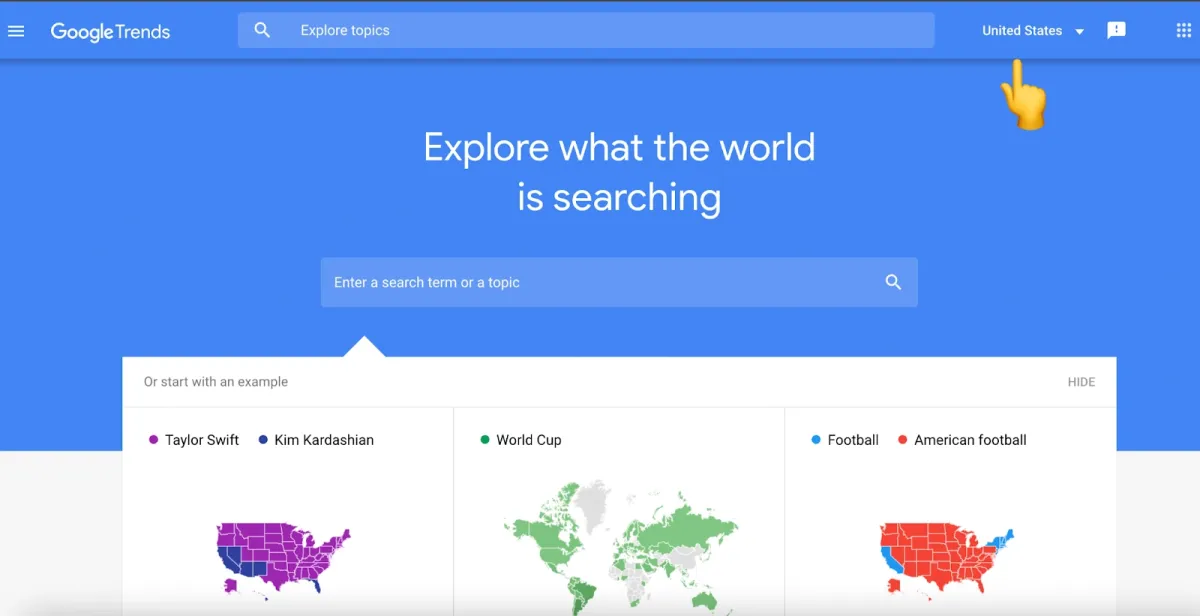
- Search for the term or topic you identified (see Figure 2).
Figure 2: Two search functions of Google Trends for the same search term
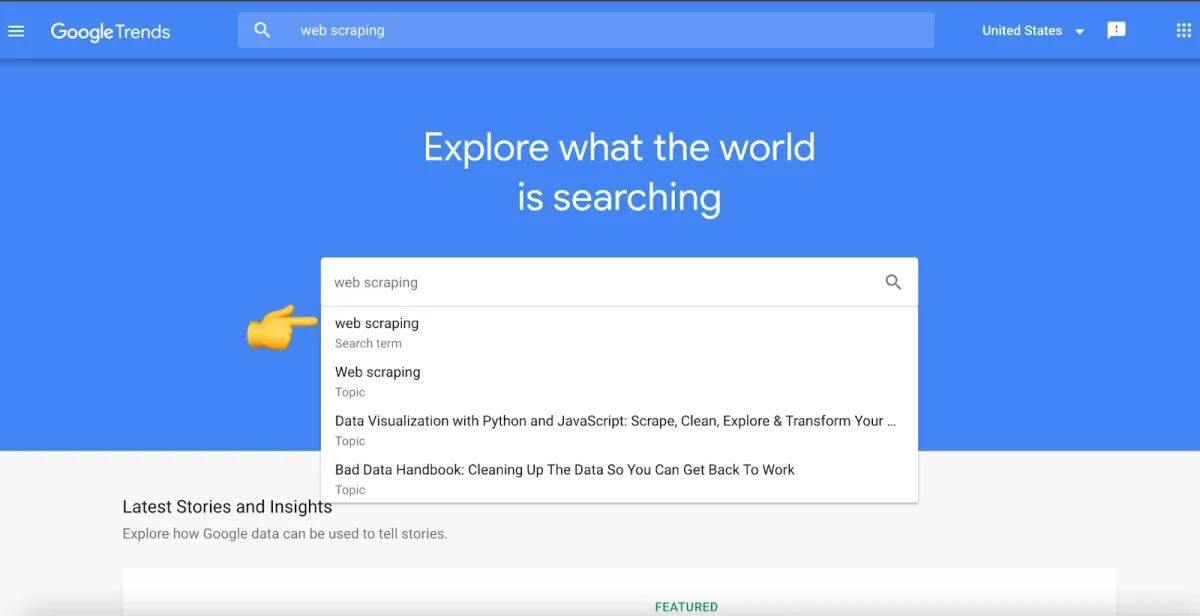
- Google Trends will provide a chart displaying interest in your specific term over the past 12 months. The highest point on the chart represents the peak popularity for the web scraping search.
- Enter the exact search term into your Google Trends scraper.
- Select the time range for the keyword (i.e., past 12 months).
- Choose your geographical location.
Sponsored
Bright Data’s Google Trends Scraper API automatically collects public data from Google Trends. It scrapes Google Trends data, such as
- Search terms and topics,
- Latest stories & insights,
- Recently trending.
5 ways to use web scraping with Google Trends
1. Target competitive keywords
Google Trends enables you to compare the relative popularity of different keywords over time, across regions, and by platform. This is especially valuable when choosing between similar keywords for SEO or ad campaigns.
For instance, a comparison of the terms “proxy server” and “VPN” in the United States over the past 12 months shows steady interest in both, but no clear upward or downward trend. If you notice that your target keyword is declining, consider pivoting to related terms that show growing popularity.
Figure 4: Comparison of search interest for two related keywords
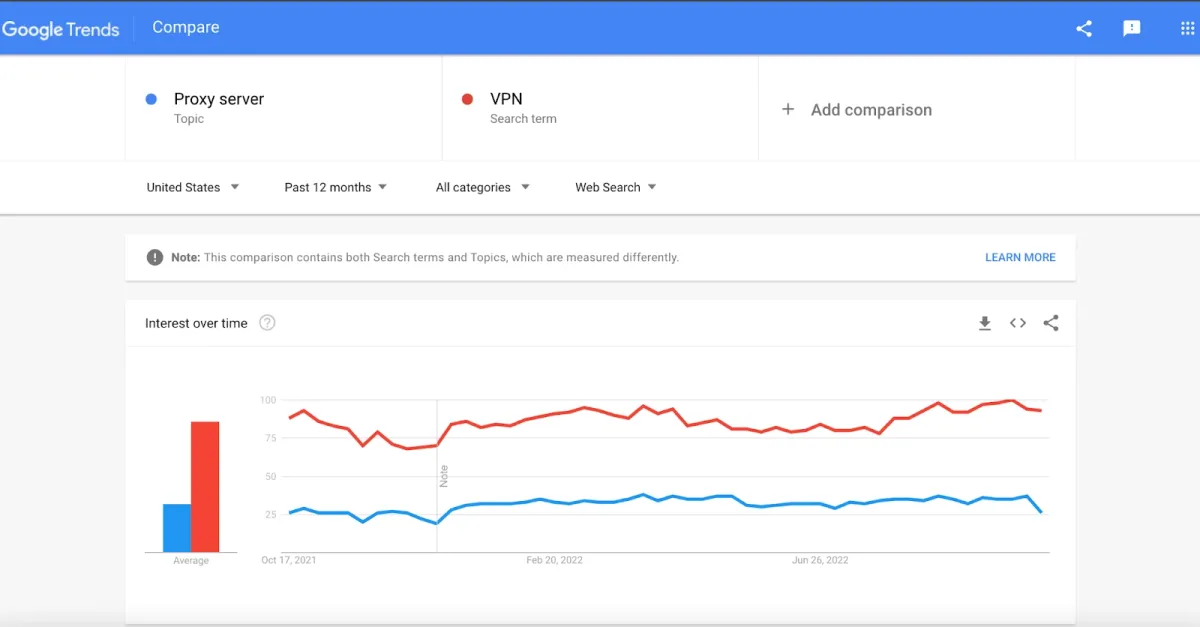
2. Conduct localized niche market research
Using Google Trends, you can drill down into keyword interest at the country, regional, or even city level, ideal for small businesses or brands targeting specific geographies.
Let’s say you’re a gaming retailer targeting customers in Germany. By selecting “Germany” as your location and searching for “gaming headsets”, Google Trends provides a chart of search interest over time and highlights which subregions show the most engagement.
3. Spot product trends on Google Shopping
Google Shopping is a goldmine for product-related insights. By switching your Trends search property to Shopping, you can identify which items are rising or falling in popularity, which is valuable for retailers analyzing customer demand and planning their inventory.
For example, a search for “wireless headphones” shows a consistent level of interest in the U.S. across the past year. Scroll further and you’ll see which states or cities are driving demand.
Term vs. topic:
- Search term = Exact match only (e.g., “wireless headphones”)
- Topic = Broader category including synonyms and related queries
Figure 6: Product trend insights, top queries, and rising interest for “computer mouse.”
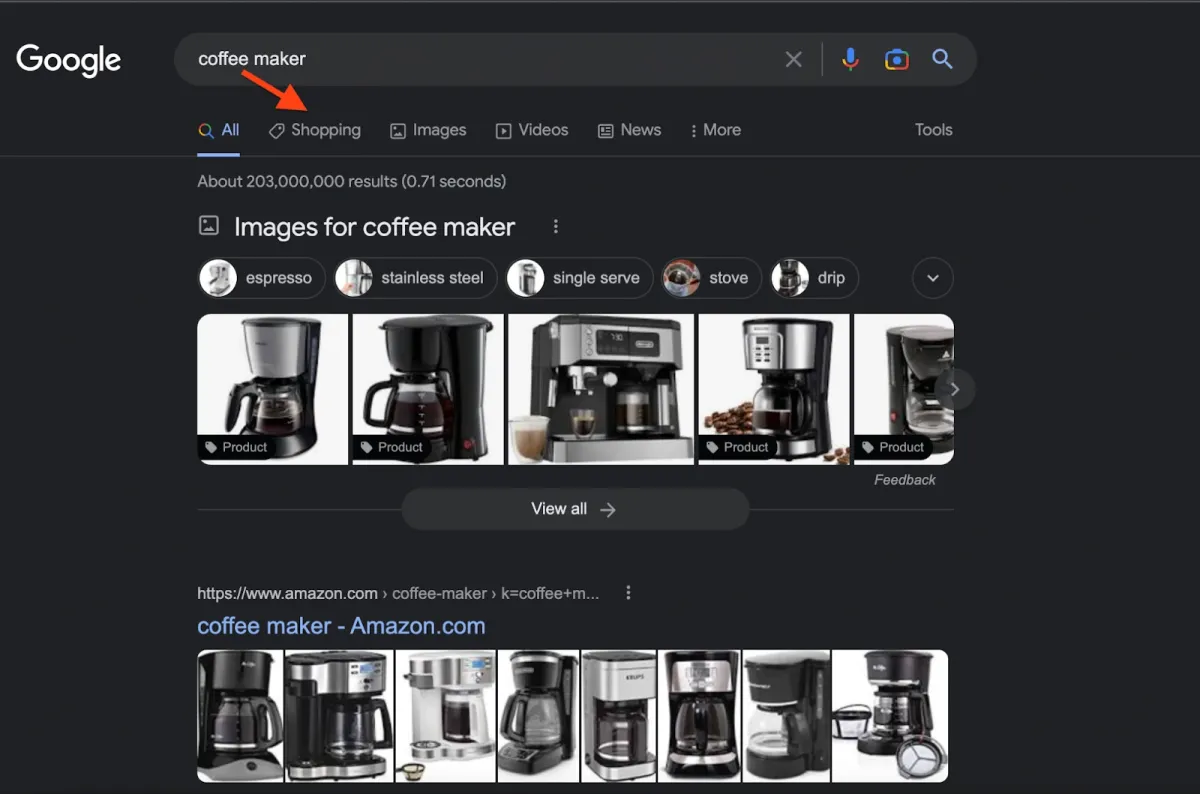
Let’s analyze the keyword “computer mouse” on Google Shopping. Google Trends displays related queries such as “glass mouse skate”, labeled as a breakout, indicating a spike of over 5000%. 2
Figure 8: Example of related queries concerning the computer mouse.
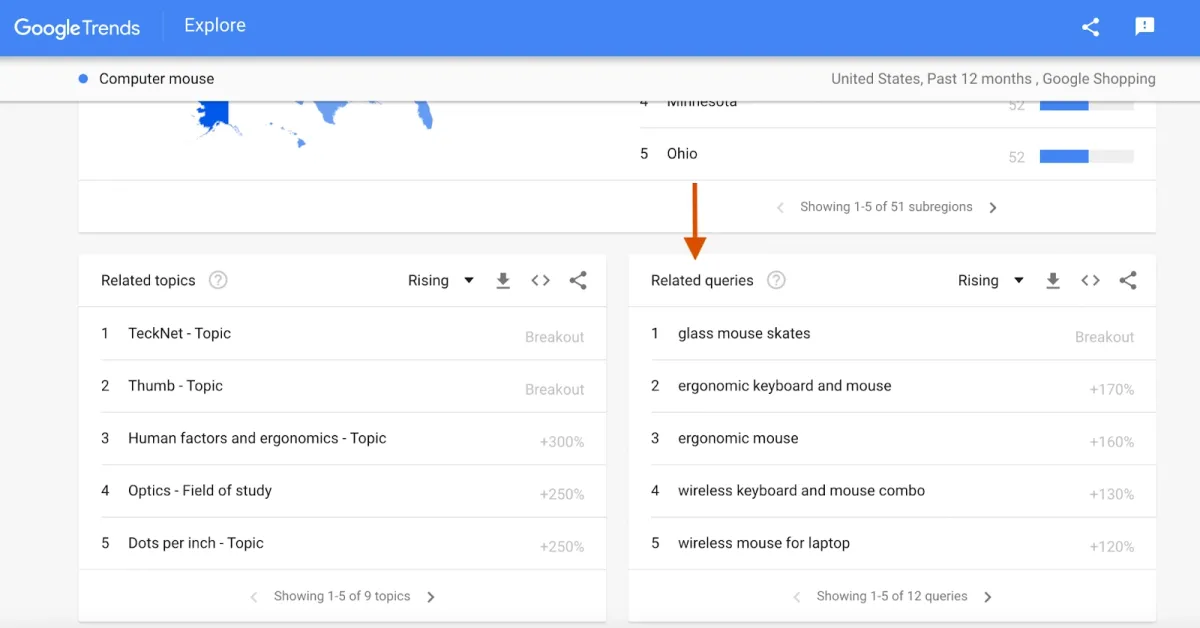
It provides information about customer preferences and needs. We can see that customers are interested in ergonomic mice and wireless mice (Figure 9). You can see which areas in the United States are most interested in the term ‘computer mouse’.
Figure 9: Example of top rising keywords concerning the computer mouse.
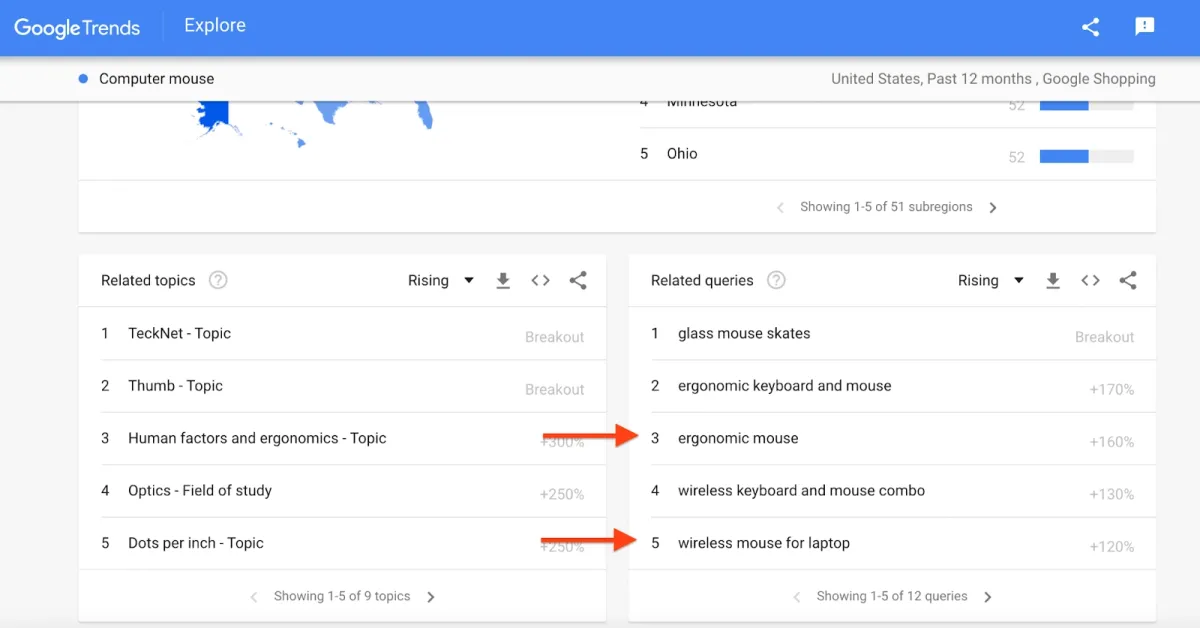
4. Optimize YouTube content strategy with Google Trends
YouTube is the second-largest search engine globally, making it essential for any brand using video marketing. Google Trends allows you to view YouTube-specific search trends by switching the search property from “Web” to “YouTube.”
Let’s say you provide web scraping services and want to create educational video content. Here’s how to find the right video topics:
- Search for “web scraping” and select it as a search term.
Figure 10: Google Trends search results for the query “web scraping.”
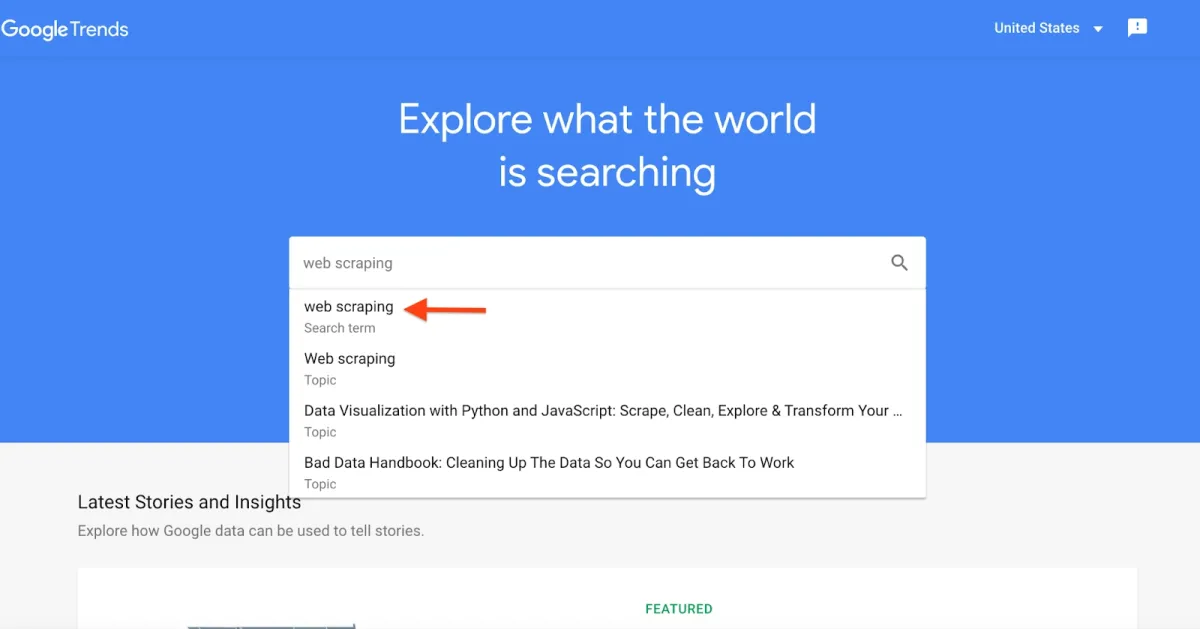
- Set your target region (e.g., United States) and a relevant time range.
- Change the platform to YouTube Search.
- Analyze Top and Rising queries, such as:
- What is web scraping
- Selenium web scraping
- Web Scraping with R
Figure 11: YouTube-focused search data for the keyword “web scraping.”
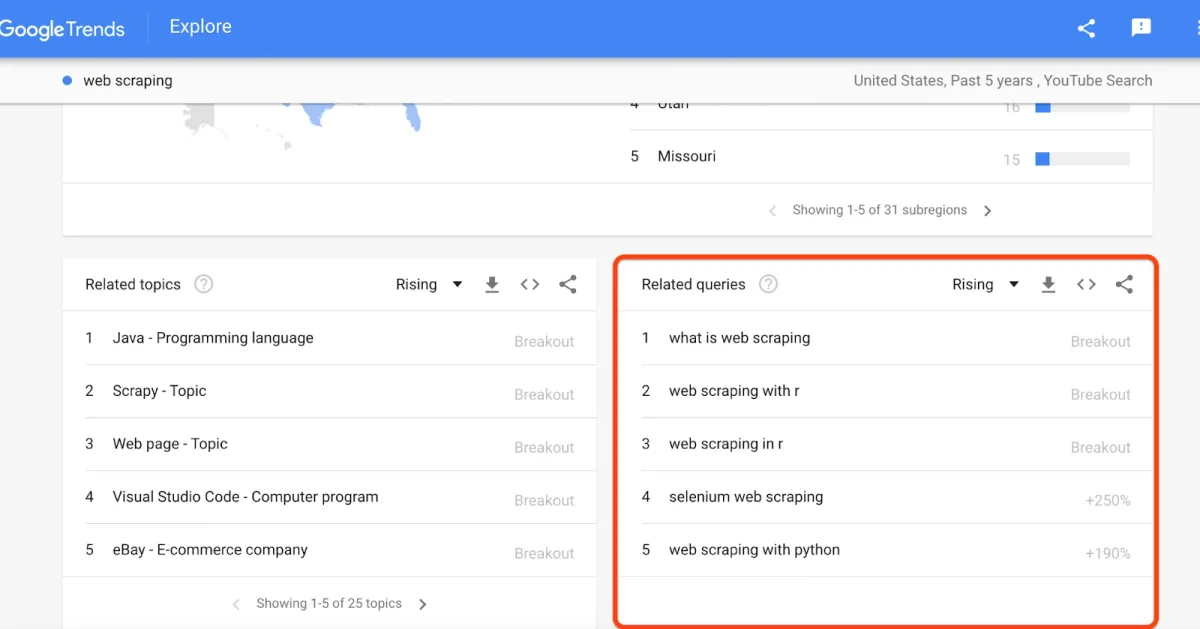
5. Monitor competitor brand popularity over time
Google Trends is an excellent tool for visualizing how interest in different brands fluctuates over time. Let’s take Netflix, HBO Max, and Hulu as an example.
By comparing these three terms in the U.S. over the last 5 years, you can see:
- Netflix maintains consistent dominance
- HBO Max and Hulu show similar trends after 2020
- Spikes often align with major content releases or promotions

Comments
Your email address will not be published. All fields are required.